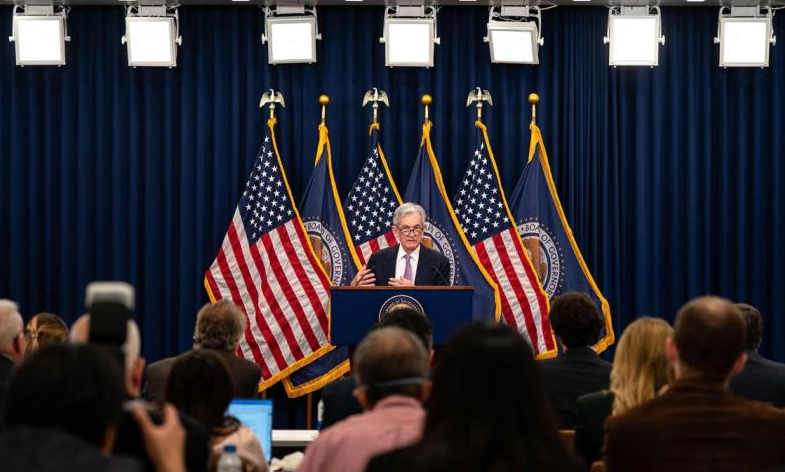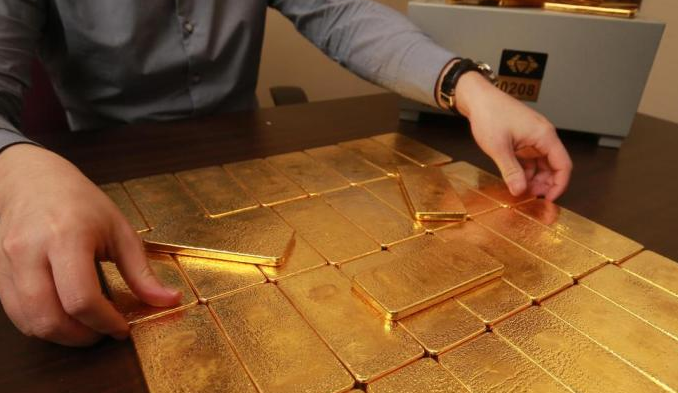
The economic powerhouse of Germany has long enjoyed a prestigious position in the international market, but success often breeds complacency. This can be true for both companies and entire countries. Some are brought down by unforeseen “black swan” events, while others are toppled by looming “gray rhino” events. For Germany, it seems to be a combination of both.
After Japan’s economy experienced a “lost” three decades, it appears that Germany is now treading a similar path of decline. Some attribute Japan’s downturn to the Plaza Accord of 1985, but what about Germany? Many may immediately think of the Ukraine conflict and the bombing of the Nord Stream gas pipeline.
It is generally believed that Japan’s decline from the top spot to a state of economic malaise had various causes, with the significant appreciation of the yen post-Plaza Accord being a major factor. Germany’s economic downturn and negative growth also have multiple causes, with the Ukraine conflict playing a crucial role. Nevertheless, these two WWII defeated nations, once economic miracles, are now facing decline. Their rise was remarkable, but their fall has been swift and surprising, prompting reflection and exploration.
The original economic locomotive of Europe, Germany, is not only facing economic challenges but also political turmoil. On the day of Trump’s re-election on November 7th, Germany’s traffic light coalition government announced its dissolution. Chancellor Scholz proposed a vote of confidence in the government in mid-January next year. Given the current situation, Scholz is likely to fail to secure a majority of confidence, potentially leading to early elections in Germany. This is significant news for Europe, but it has been overshadowed by the U.S. election.
The current German government is a coalition of the Social Democratic Party (red), the Green Party (green), and the Free Democratic Party (yellow), hence known as the traffic light alliance. The three parties have differing political ideologies, leading to significant internal conflicts within the “political marriage.” On November 6th, the three parties held a meeting on budget and economic policy issues but failed to reach a consensus. Scholz accused Finance Minister Lindner (Free Democratic Party) of obstructing budget negotiations and prioritizing party interests over national interests, leading to his dismissal. Therefore, Germany is currently facing a dual crisis in politics and economics. Many Germans may find themselves longing for former Chancellor Merkel, who led the country for 16 years with strong leadership skills, despite also heading a coalition government.
However, Germany’s economic issues did not start with Scholz; they have a longer history and complex causes, including both unforeseen factors and structural problems. Since the reunification of East and West Germany in 1990, the former West German economy has been under immense pressure and has paid a heavy price, becoming the “sick man of Europe” at one point. When Merkel came to power in 2005, she gradually restored Germany’s economic locomotive status.
Under Merkel’s leadership, the German economy had two main pillars: a large overseas market including China and relatively inexpensive natural gas from Russia. Merkel’s chief economic advisor, Lars-Hendrik Röller, once pointed out that the abundant and cheap energy exports from Russia provided a significant boost to the German economy, ensuring continuous growth for 10 years. From 2005 to 2021, Merkel also implemented a gradual phase-out of nuclear energy policies, making Germany more dependent on Russian natural gas.
When Russia invaded Ukraine on February 24, 2022, 55% (some reports say 65%) of Germany’s natural gas imports came from Russia, as Germany not only imports for its own needs but also serves as a distribution center for other European countries. About two weeks before the outbreak of the conflict, on February 8, U.S. President Biden publicly warned that if Russia invaded Ukraine, the Nord Stream 2 pipeline would disappear. This pipeline connects Russia and Germany underwater.
As expected, this gas pipeline, which Merkel had long supported the construction of, and the Nord Stream 1 pipeline, mysteriously exploded on September 26. Afterward, Norway, Sweden, Germany, and others conducted investigations but refused to disclose the results, leaving the identity of the perpetrators a mystery. However, it was well known that the U.S., particularly during Trump’s presidency, opposed the laying of the Nord Stream 2 pipeline for geopolitical and security reasons, but Merkel persisted. Merkel, often dubbed the “Iron Lady,” was the only European leader who dared to challenge Trump, leading to discord between the two. There was even an occasion when Trump publicly refused to shake hands with her, showcasing his brash attitude.
With the supply of natural gas from Russia cut off, Germany has been forced to seek expensive alternative energy sources, including liquefied natural gas imports from the United States and other countries. This has led to a significant surge in energy prices. For example, the price of liquefied natural gas imported from the U.S. is equivalent to four times the price in the U.S. Energy prices skyrocketing, coupled with global high inflation, have caused many struggling businesses to struggle further. The German government has had to request that companies reduce their energy consumption, leading to some energy-intensive businesses having to shut down and relocate.
Apart from Germany, the entire Europe is highly dependent on natural gas supplies from Russia. This arrangement was mutually beneficial, but as soon as the war broke out, oil and gas supplies were immediately weaponized. For Germany, this rupture in a major economic pillar has far-reaching consequences. The German economy saw a 0.3% negative growth in 2023 and may shrink by 0.2% this year. Bloomberg reported that over the past 15 years, major German companies have withdrawn significant amounts of funds for relocation, totaling around €650 billion (approximately $925.2 billion SGD), with about 40% of this occurring since 2021.
Simultaneously, large corporations have begun a wave of layoffs. Volkswagen announced in September that it is considering layoffs and the closure of some factories in Germany. Auto parts manufacturer Continental plans to lay off between 11,000 and 14,000 employees by 2028. Transportation manufacturer Continental has initiated a plan to lay off 7,150 employees. Small and medium-sized enterprises are facing a wave of bankruptcies. A report from the German credit agency “Credit Reform” shows that in the first half of this year, approximately 11,000 German companies went bankrupt, a nearly 30% increase from the same period last year, the highest since 2016.
The German Minister for Economic Affairs, Robert Habeck of the Green Party, recently stated that Germany’s current economic weakness is not solely due to the policies of the three-party coalition government, but rather stems from long-standing structural problems, including insufficient investment in infrastructure and a lack of technical labor. Some analysts also point out that Germany is facing challenges such as an aging population, bureaucratic red tape, and rising costs. The coalition government is divided on how to address these structural issues, adding further complexity to an already challenging situation.
The struggles faced by the century-old Volkswagen, a representative of the automotive industry, seem particularly emblematic. After leading the way for decades, Volkswagen and Germany’s automotive industry are experiencing a decline similar to what the U.S. and UK counterparts faced in the past. While the automotive industries of the UK and U.S. prospered, they were eventually overtaken by those of Germany and Japan. However, the once thriving German automotive sector has stagnated for a long time, struggling to innovate and keep up with competition. Faced with strong competition from China, they are finding it difficult to compete. Volkswagen was one of the first foreign companies to enter the Chinese automotive market, but now it seems that the student has surpassed the master. This highlights the ruthless reality of international market competition – you may eliminate others, but if you are not careful, you may also be eliminated.
(The author is a former journalist and former member of Congress)









